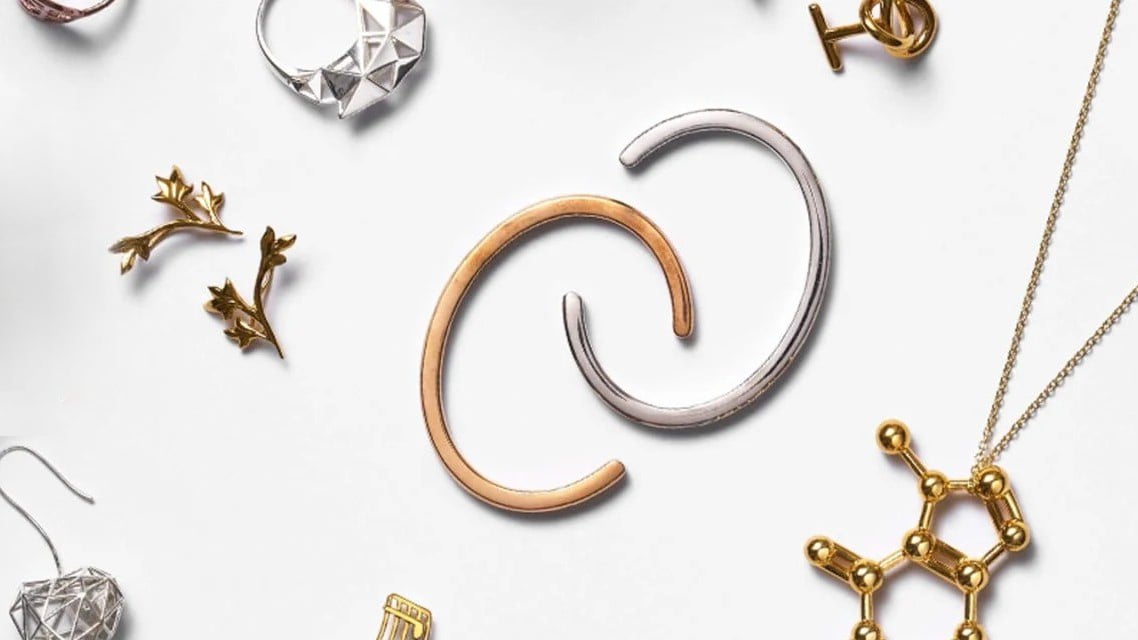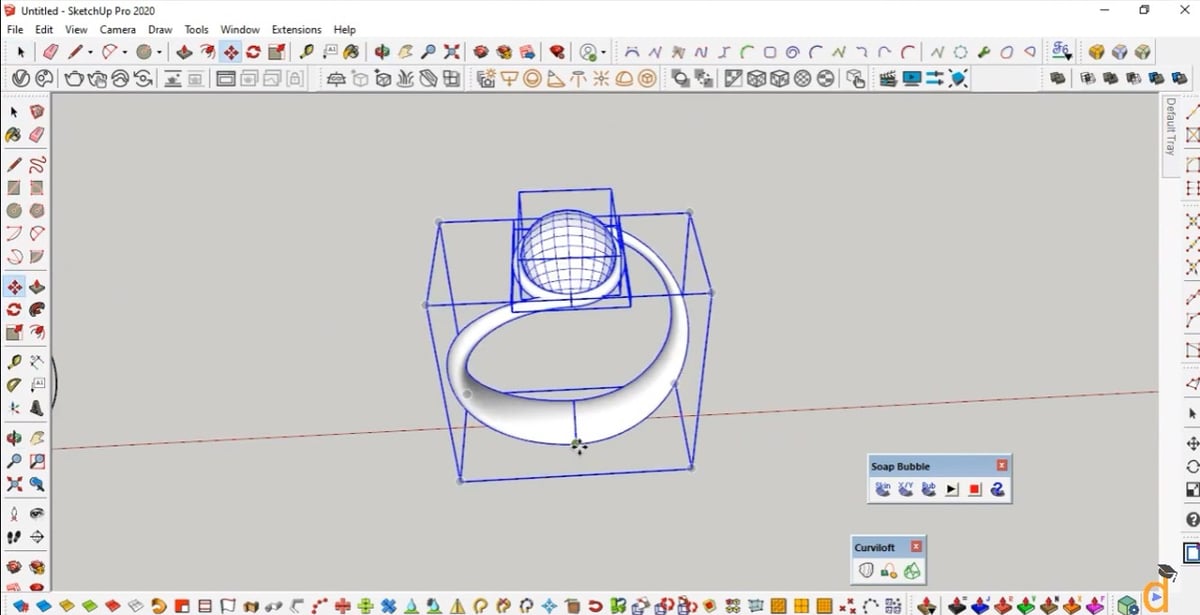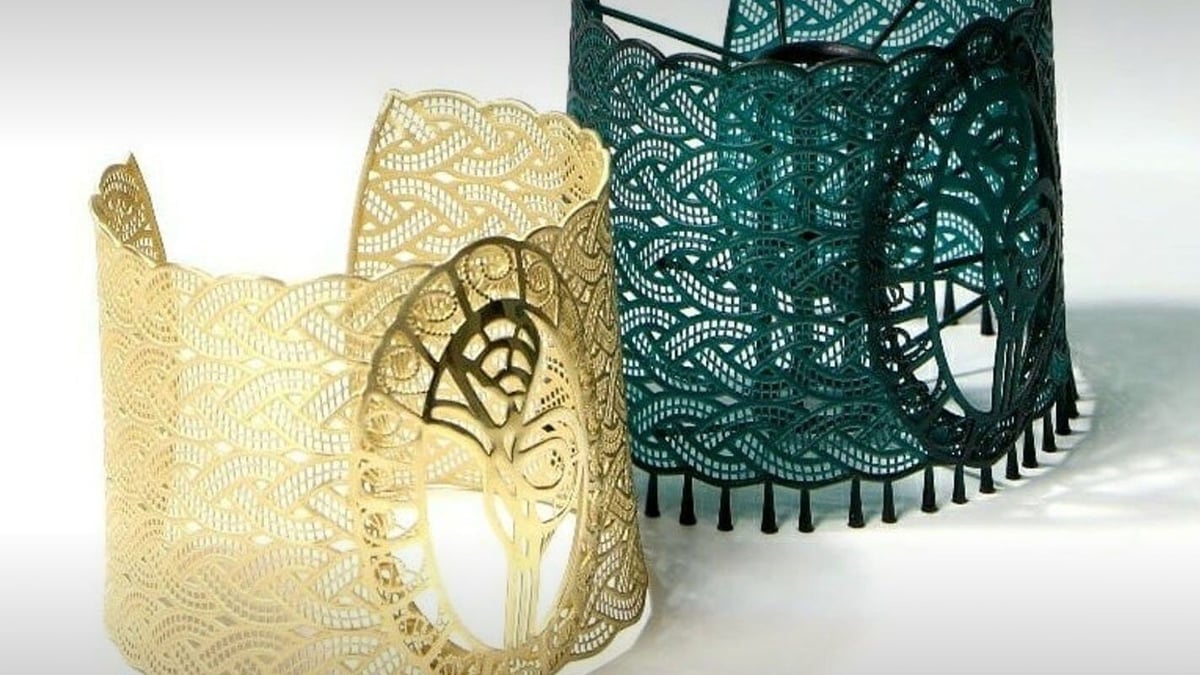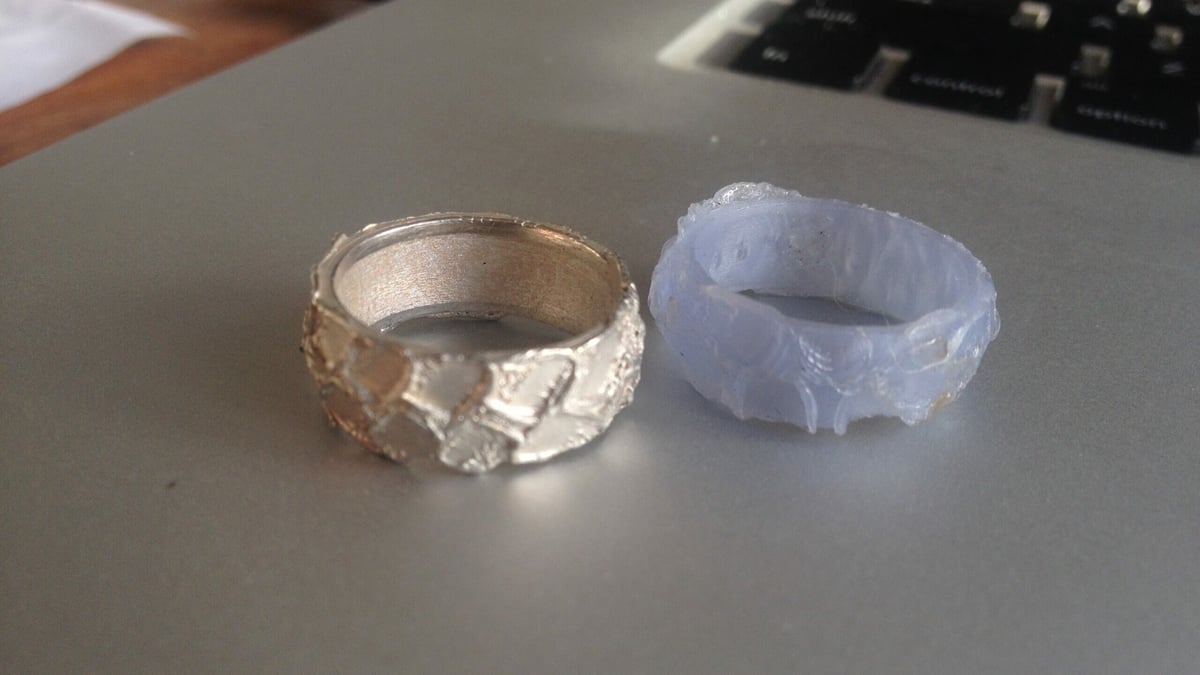3D printing has become a big trend in the jewelry world in recent years. It’s easy to understand why – the creativity and unique custom designs that 3D printing enables has designers turning imagination into reality. And it’s not just the traditional jewelers and designers who are reaping the benefits of this technology.
Previously, unless part of a large company with access to production machines and facilities, independent jewelry designers would be limited to making items by hand. Even for skilled craftsmen, some shapes and textures are just very difficult or impossible to achieve.
Now, whether you’re an Etsy store wanting to expand into expensive pieces, a social media influencer, or just looking to experiment with the possibilities of your resin printer, creating custom jewelry from precious metals has never been easier – thanks to 3D printing.
But how does 3D printing gold work and can you get started with the technology at home? That’s a great question we’re excited to answer! Keep reading for the breakdown.
Your Own Private Gold
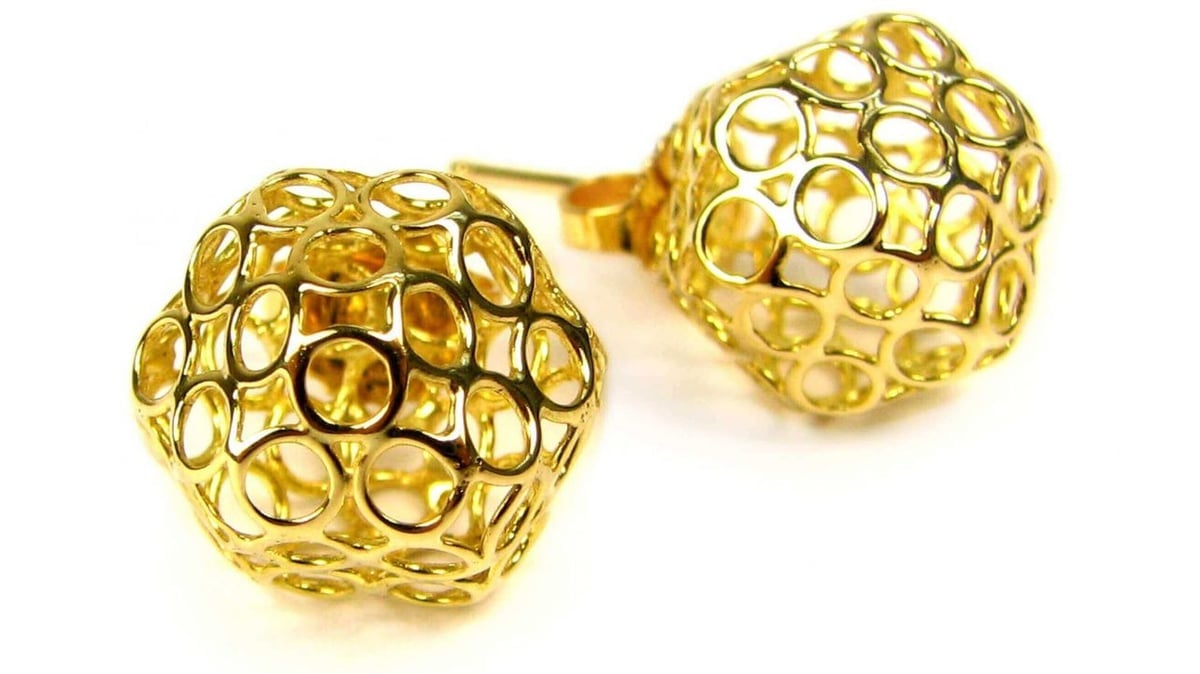
There are three ways to get custom 3D printed gold. The easiest approach is to use a 3D printing service. Just upload your model, and the printing experts will take of the rest. But how are the professionals using 3D printing to create your designs? Well call us Toto cause we’re about to pull back the curtains and reveal the wizard(s) behind 3D printing gold.
A long-established method to create gold pieces is investment casting. 3D printers can be used to create the wax models needed to form a plaster cast of the design. Pour molten gold into the plaster, and your wax model is now gold!
Directly 3D printing gold is only possible with industrial methods. The main approach involves some advanced machinery to build your design layer-by-layer from a bed of powdered metal. While investment casting at home is possible with the right safety precautions, the industrial-grade machines that can print gold directly are exclusive to professionals.
We have more details about each of these methods coming up, starting with the most accessible. But first, let’s talk a little about gold.
Types of Gold
Gold is an ideal material for jewelry because it’s friendly to the skin even with long-term contact and it is resistant to corrosion. Not all gold’s created equal, though. Before anything can be 3D printed, you’re going to need to select the type of gold you want to work with.
The first question is what color of gold do you want your final product to be? The most common options are silver gold, rose (sometimes known as pink or red) gold, or the classic yellow gold.
Next, you’ll need to look out for the karat of the gold, which reflects the fraction of pure gold in the metal. Totally 100 % pure gold is not used for jewelry, as it’s actually inherently so soft that you can shape it with the heat from your hands. To solve this, other metals, like silver or copper are added to create a gold alloy suitable for everyday wear.
One karat is 1/24 (or ~4.2 %) of the total composition. So 18 karat gold is 18/24 or 75 % gold and 25 % other metals. 24-karat gold is the closest to pure, usually around 99.9 %, but it can go higher. Just like going to the jewelry store to pick out some new bling, the cost of custom-printed gold will be largely influenced by the quality and purity of the material used.
Printing Services
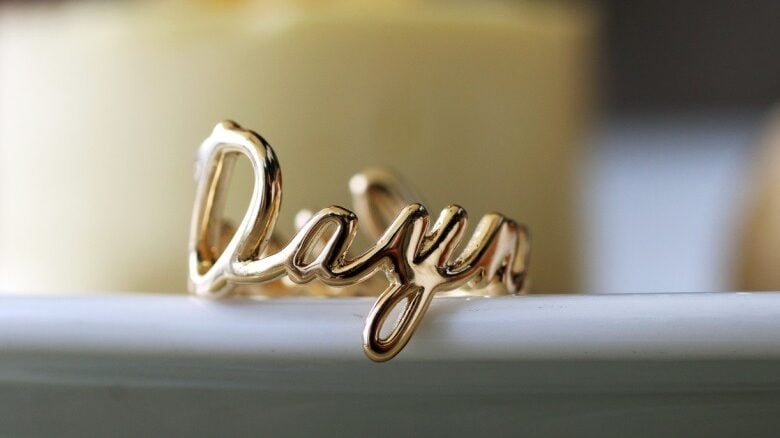
First up, the easiest approach you can take to get yourself some custom gold pieces is to use a printing service. If the thought of buying a bunch of new equipment or raw materials intimidates you, you’re not alone. That’s why so many 3D printing services have popped up offering to 3D print gold for you. Sites like ProGol3D even specialize in 3D printing with gold.
Using a service is much cheaper (and safer) than setting up an investment casting workshop in your garage. It also brings the high-quality results only possible with industrial machines right to your doorstep. All you need to do is upload a 3D model, choose your material and finish,then you’ll be connected to a suitable service provider in no time!
Don’t know how to ring the right service? Not to worry! Through Craftcloud by All3DP, you can easily find the best price and provider for your needs. Using your designs and location, real-time prices from major local and global providers will be offered to you. In addition to taking the work off your hands, you can benefit from professional quality, a wide range of materials, and round-the-clock support.
Design Software
If now you’re thinking, “But how do I create a 3D model of my dream jewelry?” Well, there’s a CAD program for that. Using a CAD program will allow you to make models with accurate dimensions, which is necessary if your jewelry is to fit properly.
You’ve got several options out there. You could try Mudbox from Autodesk if you prefer to take a freestyle approach. SketchUp is great for beginners who would like to start out with a user-friendly and free program.
Investment Casting
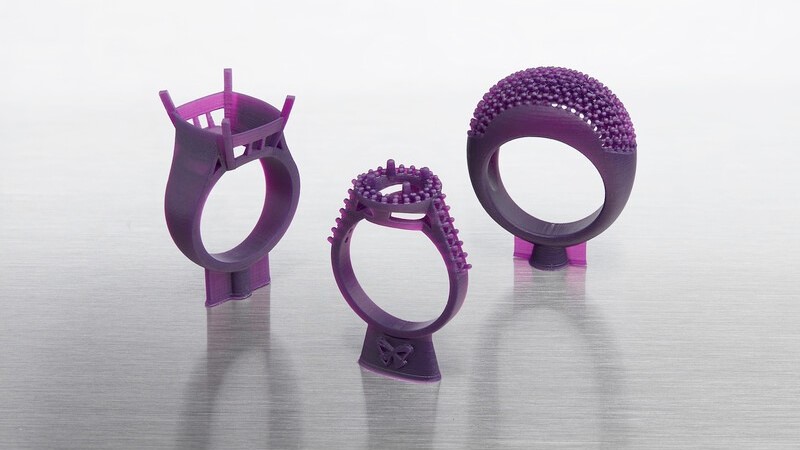
Long before industrial methods were used to turn gold dust into fashion accessories, investment casting – or more specifically lost-wax casting – was being used to create detailed artwork, ornaments, and jewelry from gold as well as other metals. While we no longer have to rely on beeswax to create a model, the rest of the process is still pretty similar after thousands of years.
How It Works
It all begins with creating a model of your final design – which is called a “pattern” – using a material that can easily be melted away, such as wax. The wax pattern then gets encased in plaster, which once dry, is heated to melt away the wax, leaving its impression behind in the plaster. This ring-shaped hole in the plaster can be filled with molten gold. Break away the plaster, and there you have it: the wax pattern you started with has now been created with gold!
3D printing technology has made this process much easier, especially when it comes to jewelry and other intricate pieces. Creating a pattern is now as easy as printing it in castable wax with either a resin or FDM 3D printer.
Printing with Wax
If you have a resin printer at home, you may already be halfway to creating your own custom jewelry! If you’re looking for a resin printer that is suitable for this task, we’ve got you covered. The most important thing is to print your designs in a castable wax resin – more on that in just a moment.
In general, the printer resolution will be the major bottleneck to the types of designs you can create. Ideally, the printer should also be compatible with third-party resins to give you the largest selection of options. Some printers, like Formlabs, will only be able to print their own brand of castable wax resin.
There are many options for 3D printable wax resins on the market but also several factors to consider when deciding which one is for you. First things first, the wax should be compatible with the range of wavelengths your printer uses.
Castable wax resins for 3D printing will also vary in their wax content, which will play a role in the resolution you can achieve and their ash level. Ideally, you would want a resin with “ash-free burnout”, which means that it won’t leave behind any residue in the plaster after being melted and removed, like Liqcreate Castable Wax resin.
Additional specs of a wax resin, like melt time and shrinkage levels, may also be relevant considerations, but the 3D printer you use will ultimately play a larger role in your success with 3D printing a wax model.
What about FDM?
And to all those FDM fans out there: Don’t worry! We have not forgotten about you! Although FDM cannot match the resolution of many resin printers, it can still be used to create castable wax patterns. Hopefully, you prefer the chunky jewelry look if you’re opting for this approach.
For creating a castable pattern with FDM, look no further than PLA. In nearly an identical process to lost-wax casting above, lost-PLA casting only uses PLA instead of wax to create the initial pattern. While the average PLA filament may leave behind ash residue after the burnout, there are FDM filaments that are formulated for investment casting, like Polycast.
So maybe creating a castable pattern sounds all fine and dandy for you, but don’t forget that this is just the first step. Now, just encase it in plaster, get it really hot to remove all of the material, melt your gold, then pour it into the plaster mold. Or maybe reconsider those printing services.
Industrial Methods
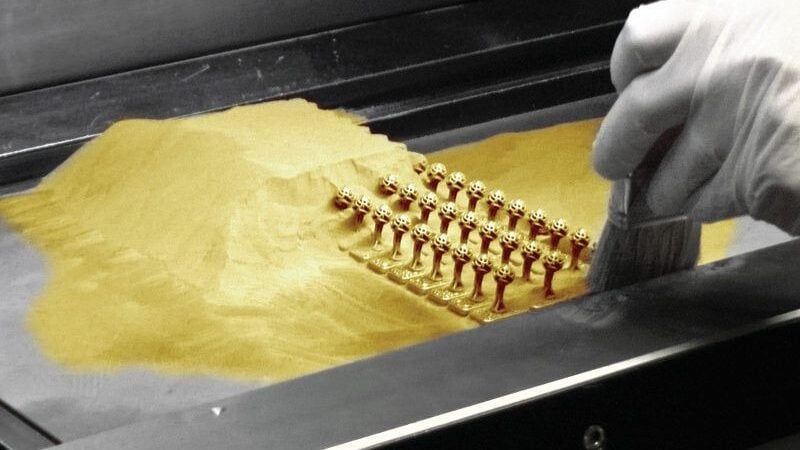
And finally, we come to the industrial methods. Laser bed powder fusion (LBPF) is an additive manufacturing process commonly used for metal materials and is the most established method to directly print gold. Binder jetting is another option, although the first proof-of-concept for using this technology with gold was only recently established in 2021. Therefore, we’re going to focus on LBPF for now.
How It Works
The process begins with a shallow bed of fine metal powder that sits in an inert atmosphere of nitrogen or argon. A powerful laser is used to selectively melt regions of the powder to create a bonded layer. Then, the bed lowers just slightly, fresh power is swept across the previous layer, and the process repeats. Layer by layer, the final piece is built, and then, once cooled, it’s on to post-processing to bring out that gold shine.
You may hear other terms for this method such as direct metal laser sintering (DMLS) or selective laser melting (SLM), but it’s all the same technology – though LPBF machines can vary in the number and power of their lasers, which can play a role in the speed and materials that they can print.
Challenges
This type of approach can generate intricate designs and complex geometries that would not be possible with a subtractive manufacturing method. While this works great for producing parts from steels, aluminum, titanium, and even alloys and mixed materials (like aluminum and nylon), doing the same with precious metals like gold requires some special care.
As we mentioned above, 100% gold jewelry is unattainable. That’s because pure gold is actually quite a soft metal that requires alloying in order to make it the durable material that we are familiar with. For this same reason, the intense lasers in LBPF used for sintering steels would nearly vaporize gold.
According to EOS, a German manufacturer of all kinds of metal printing technologies that partnered with Cookson Precious Metals to improve the gold printing process, the best results for gold jewelry require a specialty machine with an appropriate laser and suitable gold powder that can hold up against the power of the laser.
For both of these components, you’re looking at a minimum of $100,000 just to get started. While there are machines like this out there, you’re probably better off considering one of the other two methods to get your own custom gold.
License: The text of "Gold 3D Printer: How to Get Gold 3D Printed" by All3DP is licensed under a Creative Commons Attribution 4.0 International License.

